#laboratory microscope
Explore tagged Tumblr posts
Text
Evolution and Impact of the Laboratory Microscope
The laboratory microscope stands as one of the most revolutionary instruments in the history of science. From the early rudimentary versions that merely magnified objects to today’s sophisticated digital and electron microscopes, this tool has significantly advanced our understanding of the natural world. It has not only enabled the exploration of the microscopic realm but has also catalyzed groundbreaking discoveries across various scientific fields. This article delves into the evolution, significance, and future of the laboratory microscope, underscoring its unparalleled role in scientific progress.
A Brief History of the Laboratory Microscope
The concept of magnification dates back to ancient civilizations, but it was not until the late 16th century that the first true microscope was invented. Hans and Zacharias Janssen, Dutch spectacle makers, are credited with creating the first compound microscope around 1590. This early model, which combined multiple lenses, allowed for greater magnification than simple magnifying glasses.
However, the microscope as we know it today owes much to Antonie van Leeuwenhoek, often referred to as the "Father of Microbiology." In the 1670s, van Leeuwenhoek built simple microscopes with lenses capable of magnifying objects up to 300 times their size. With these instruments, he made the first observations of bacteria, protozoa, and other microorganisms, opening an entirely new world to scientific inquiry.
The 19th and 20th centuries saw significant advancements in microscope technology. Achromatic lenses, developed by Joseph Jackson Lister in the 1830s, eliminated color distortions, enabling clearer and more accurate observations. The invention of the electron microscope in the 1930s, which uses beams of electrons instead of light, allowed scientists to observe structures at the atomic level. This marked a monumental leap in our ability to study the building blocks of life.
The Modern Laboratory Microscope: A Multidisciplinary Tool
Today’s laboratory microscopes are sophisticated, highly specialized instruments used in various scientific disciplines. In biology, they are indispensable for studying cell structures, bacteria, viruses, and other microorganisms. In chemistry and materials science, microscopes help researchers analyze the composition and structure of materials at a molecular level. In medicine, they are critical for diagnosing diseases, studying tissue samples, and developing new treatments.
One of the most significant advancements in recent years has been the development of digital microscopes. These devices combine traditional optical technology with digital imaging, allowing for real-time observation and the ability to capture, store, and share images and videos. Digital microscopes have made microscopy more accessible, enabling remote collaboration among scientists and educators worldwide.
Confocal microscopes, another modern innovation, use laser scanning to produce high-resolution images of thick specimens. This technology is particularly useful in biological research, where it allows for the detailed study of complex structures within cells and tissues.
The Impact of the Laboratory Microscope on Scientific Discoveries
The laboratory microscope has been at the heart of countless scientific breakthroughs. In microbiology, it enabled the discovery of microorganisms, leading to the development of the germ theory of disease and the advent of modern medicine. The ability to observe pathogens and understand their behavior was instrumental in developing vaccines, antibiotics, and other life-saving treatments.
In cell biology, the microscope has allowed scientists to explore the intricate workings of cells, leading to discoveries such as the structure of DNA, the process of mitosis, and the mechanisms of cellular communication. These insights have been crucial in understanding genetic diseases, cancer, and other medical conditions.
The microscope has also played a pivotal role in materials science. By enabling the examination of materials at the atomic level, it has facilitated the development of new materials with unique properties, such as superconductors, nanomaterials, and advanced composites. These materials have a wide range of applications, from electronics to aerospace to renewable energy.
The Future of Laboratory Microscopy
As technology continues to advance, the future of laboratory microscopy looks promising. One area of exciting development is super-resolution microscopy, which breaks the diffraction limit of light to achieve even higher levels of detail than traditional optical microscopes. This technology has the potential to revolutionize fields such as neurobiology, where it could provide unprecedented insights into the functioning of the brain.
Another emerging trend is the integration of artificial intelligence (AI) with microscopy. AI-powered microscopes can automate the analysis of images, allowing for faster and more accurate data interpretation. This capability is particularly valuable in fields such as pathology, where AI can assist in the early detection of diseases such as cancer.
Moreover, the ongoing miniaturization of microscopes is making them more portable and affordable, broadening their accessibility. Handheld and smartphone-based microscopes are already being used in educational settings and in remote areas for medical diagnostics. These portable devices have the potential to democratize science, enabling more people to engage in scientific research and discovery.
Conclusion
The laboratory microscope is more than just an instrument; it is a window into the hidden world that exists beyond the limits of human vision. From its humble beginnings to its current state as a highly advanced tool, the microscope has been instrumental in expanding our understanding of the natural world. Its impact on science and medicine cannot be overstated, as it has paved the way for countless discoveries and innovations.
As we look to the future, the laboratory microscope will undoubtedly continue to evolve, pushing the boundaries of what we can see and understand. Whether in the hands of a student, a researcher, or a medical professional, the microscope remains an essential tool for exploration and discovery. Its legacy is one of curiosity, innovation, and the relentless pursuit of knowledge—a legacy that will continue to inspire future generations of scientists.
1 note
·
View note
Text
Exploring the Pinnacle of Imaging: Nikon Upright Microscopes in Healthcare and Research
When it comes to microscopy, Nikon's legendary optics stand out, ensuring exceptional image quality across the entire magnification range. Renowned for their universal microscope objectives, these systems support multi-mode imaging applications, advanced automation capabilities, high numerical apertures (N.A.s), and long working distances. These features make Nikon upright microscopes an invaluable asset for a variety of applications, from clinical diagnostics to cutting-edge multiphoton imaging.
Nikon Upright Microscopes : A Closer Look
Nikon’s upright microscopes are specifically designed for observing samples, such as slides, placed on a stage with objectives positioned above. These microscopes incorporate two types of focusing mechanisms: the focusing stage and the focusing nosepiece, both capable of mounting various intermediate tubes and accessories stably. This versatility ensures that Nikon's upright microscopes deliver bright, clear images to the edge of the field of view, maintaining faithful color reproduction and high resolution.
Key Features and Benefits :-
Exceptional Imaging Quality :-Nikon’s advanced optics guarantee superb image clarity and detail across all magnifications, providing bright, evenly illuminated images with true-to-life colors.
Versatile Focusing Mechanisms :-The choice between a focusing stage and a focusing nosepiece allows for customized setups tailored to specific research or clinical needs.
Ergonomic and Intuitive Design :-Nikon upright microscopes are designed for comfort and ease of use, reducing fatigue during prolonged observation sessions.
Wide Range of Applications :-Suitable for advanced biological science research, routine clinical examinations, and educational training, Nikon’s diverse lineup meets the demands of various scientific and medical fields.
Nikon’s Upright Microscope Series
ECLIPSE Ei :- Nikon’s advanced optics guarantee superb image clarity and detail across all magnifications, providing bright, evenly illuminated images with true-to-life colors.
ECLIPSE Si :- The choice between a focusing stage and a focusing nosepiece allows for customized setups tailored to specific research or clinical needs.
ECLIPSE Ci Series :- Nikon upright microscopes are designed for comfort and ease of use, reducing fatigue during prolonged observation sessions.
ECLIPSE Ni Series :- Suitable for advanced biological science research, routine clinical examinations, and educational training, Nikon’s diverse lineup meets the demands of various scientific and medical fields.
Conclusion

Nikon upright microscopes embody a blend of innovation, precision, and user-friendly design. Whether for clinical applications, research in biological sciences, or educational purposes, Nikon provides robust solutions that cater to a wide range of needs. Their superior imaging quality, ergonomic design, and versatile features make them an essential tool in any scientific or medical setting. Choose Nikon upright microscopes for reliable, high-performance imaging that supports your most demanding applications.
#Nikon#biological sciences#laboratory instruments#Nikon’s Upright Microscope#Microscope#laboratory equipment supplier in India#laboratory Microscope#Microscope price#Microscope dealers in India
0 notes
Text










🧬⚗️ ACNH Bug Museum - Part 5 🔬🧪
Sims 4, base game compatible, the steam versions of 3 items requires Cats & Dogs for the animation to show up | 51 items 💗
This part focuses on the laboratory room. I've added extra swatches to many of the items.Plants are in Part 1. More objects in Part 2. Butterfly exhibit room in Part 3. In-wall cages and other decor in Part 4. At last, the final set for the bug museum collection is finished! 🥳
I hope you enjoy! ☺️💗 *Remember to pay attention to poly numbers if you have an older computer.
Always suggested: bb.objects ON, it makes placing items much easier. For further placement tweaking, check out the TOOL mod.
Use the 0,9 keyboard feature to raise items or lower them
Use the scale up & down feature on your keyboard to make the items larger or smaller to your liking. If you have a non-US keyboard, it may be different keys depending on which alphabet it uses.
Set contains: Buy: -Beaker | 4 swatches | 230 poly -Cabinet | 2 swatches | 1002 poly -Cabinet Light (glows in the dark) | 1 swatch | 354 poly -Computer 1 (decor) | 1 swatch | 1334 poly -Computer 2 (decor) | 1 swatch | 1202 poly -Container | 1 swatch | 550 poly -Containers 1 | 6 swatches | 1932 poly each -Containers 2 | 1 swatch | 1658 poly -Counter Corner (many slots) | 2 swatches | 1762 poly -Counter Right (many slots) | 1 swatch | 1860 poly -Cup of Coffee (2 items: steam & non-steam versions) | 6 swatches | 582 poly -DNA (glows in the dark) | 4 swatches | 1057 poly -Electrical Outlet | 1 swatch | 1016 poly -Experiment Set (2 items: steam & non-steam versions) | 2 swatches each | 2408 poly each -Flea | 1 swatch | 410 poly -Floor Lamp (glows in the dark) | 1 swatch | 3618 poly -Fly | 1 swatch | 554 poly -Fly Swatter | 4 swatches | 446 poly -Glass Cage Fleas (slotted) | 1 swatch | 4774 poly -Glass Cage Fly (slotted) | 1 swatch | 562 poly -Glass Cage Mosquito (slotted) | 1 swatch | 2712 poly -Glass Cage Paper Kite Butterfly | 1 swatch | 3110 poly -Info Sign | 1 swatch | 466 poly -Jar Single 1-3 (3 items) | 4, 1, & 4 swatches | 116, 166, & 274 poly -Jars 1-4 (4 items) | 1, 4, 4, & 1 swatches | 444, 572, 2178, & 2462 poly -Jars Box | 4 swatches | 1054 poly -Jars Tray | 4 swatch | 736 poly -Microscope | 5 swatches | 1180 poly -Mortar and Pestle | 1 swatch | 146 poly -Mosquito | 1 swatch | 586 poly -Papers | 2 swatches | 106 poly -Petri Dish | 1 swatch | 62 poly -Plant Flytrap | 3 swatches | 1978 poly -Scale (slotted) | 3 swatches | 430 poly -Screen | 1 swatch | 4614 poly -Spray Bottles | 1 swatch | 2918 poly -Spray Bottle Single | 2 swatches | 974 poly -Stool | 3 swatches | 658 poly -Test Tubes | 2 swatches | 332 poly -Tissue | 1 swatch | 402 poly -Wall Pipe | 1 swatch | 836 poly -Wooden Bug Cage | 1 swatch | 2719 poly
Build: -Floor Rubber | 3 swatches | Misc -Walls | 1 swatch | Misc / Masonry
Type “acnh bug museum part 5" into the search query in build mode to find quickly. You can always find items like this, just begin typing the title and it will appear.
As always, please let me know if you have any issues! Happy Simming! 💗
�� SimFileShare (no ads): HERE
📁 Alt Mega Download (still no ads): HERE
🌻 Download on Patreon
Will be public on May 7th, 2025 💗 Midnight CET
Happy Simming! ✨ Some of my CC is early access. If you like my work, please consider supporting me (all support helps me with managing my chronic pain/illness & things have been rough as of late) My flare-ups have been more frequent and intense on top of it all:
★ Patreon 🎉 ❤️ |★ Ko-Fi ☕️ ❤️ ★ Instagram📷
Thank you for reblogging ❤️ ❤️ ❤️
@sssvitlanz @maxismatchccworld @mmoutfitters @coffee-cc-finds @itsjessicaccfinds @gamommypeach @stargazer-sims-finds @khelga68 @suricringe @vaporwavesims @mystictrance15 @moonglitchccfinds @xlost-in-wonderlandx @jbthedisabledvet @fischottersims
Other CC Pictured: The seamless windows that I have used in the preview are the Ava Windows by Mincsims. Heads up that this download is unfortunately on TSR, which I don't jump to share links to due to all of their ads and overall history (nothing against the creators, they are great), but seamless windows are quite hard to find so I have to leave you with a link to t-s-blargh.
The rest of my CC
#ts4cc#s4cc#sims 4 bug museum#sims 4 bugs#sims 4 insects#sims 4 science#sims 4 lab#sims 4 laboratory#sims 4 counter#sims 4 table#sims 4 experiment#sims 4 bottles#sims 4 jars#sims 4 object#sims 4 plant#sims 4 scale#sims 4 microscope#sims 4 fly swatter#sims 4 flies#sims 4 fleas#sims 4 mosquitos#sims 4 cage#sims 4 maxis match#simdertalia
154 notes
·
View notes
Text






Today is Biologist's Day, it's my first celebration as a student of this science, there were several conferences at my university and they were all very interesting! , they made me remember why I started this
it was a fun week but now I have a lot of homework and things to study
#bio student#biology#books#books & libraries#dark academia#study blog#study motivation#studyblr#studyspo#science#college#microscope#laboratory#stemblr
63 notes
·
View notes
Photo
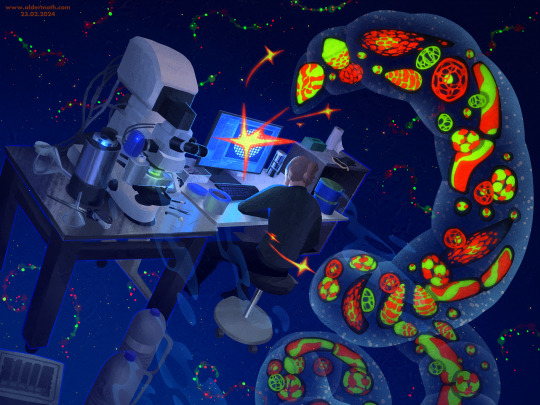
LSM900 - Empyreal Visitors
Posted using PostyBirb
#digital art#artwork#art#painting#scenery#scenery painting#scene#science#microscope#laboratory#lab#props#equipment#biology#biologist#plankton#scientist#digital painting#light#rendering
57 notes
·
View notes
Text

Maura Isles Aesthetic
#maura isles#doctor#medicine#coroner#forensics#tortoise#fencing#cooked#laboratory#microscope#police#boston#boston massachusetts#boston police department#police department#jane rizzoli#jane x maura#rizzles#rizzoli and isles#tv series#tv shows#aesthetic#angela rizzoli#frankie rizzoli#rizzoli & isles#forensic pathology#irish#tv edits#tv aesthetic#city
58 notes
·
View notes
Text
skyler saying he'll get yery to a therapist n lying about it is so funny. he was so close to breaking the curse (being the first shaperaverse character to get therapy) but alas!
#shaperaverse#this is somehow the opposite of um#posthuman 'maybe we should get therapy' 'nah' michael#magic skyler i want to study you under a microscope or perhaps in a laboratory#the puppetshade chronicles
30 notes
·
View notes
Text

the beauty of microscopy
rattus norvegicus
thyreoidea, trachea, esophagus
institute of biology
🧫instagram🧫
#mine#nature#laboratory#lab aesthetic#laboratory aesthetic#stem academia#women in stem#dark aesthetic#dark acamedia#dark vibes#aesthetic#vulture culture#vulture aesthetics#zoology#zoological illustration#biology#microscope#stem#anatomy#anatomical illustration#stem student#cell aesthetic#cells at work#rat anatomy#university#scienceblr#science tumblr
144 notes
·
View notes
Text









Dendy (from OK K.O) tech stimboard
sources: 🌼-🧪-🎒 | 🌼-X-🎒 | 🌼-🧪-🎒
__ SFW & CHILD SAFE INTERACTION ONLY __
#Arlo's stimboards#dendy#ok ko dendy#ok ko let's be heroes#ok ko kappa#ok ko#stimboard#stimboards#character stimboard#green stims#yellow stims#gif warning#stimblr#nature stim#techcore#labcore#stim#visual stim#laboratory stim#lab stim#flower stim#i don't know why this ended up with black backgrounds but it didd#i can kind of read it like if she were an evel scientist helping tko cause chaos#there is probably an au just like that but#i haven't looked knto aus for this show yet soo#i want to make so many more stimboards based off her loke woth microscopes#and fake career toys like fake syringes and stuff#shes just the bestest lil kiddd
46 notes
·
View notes
Note
Are you still at Bart’s? Your brother just dropped off three tickets to Greece. Did you know about this?
Are we going?

Yes I am still here, using the microscope.
Wait what? Why should he do that? Is this some sort of trick?
#roleplay#rp#sherlock roleplay#sherlock rp#johnlock roleplay#johnlock rp#at the lab#scienctist#laboratory#lab#microscope#barts#st barts#Picture#st bartholomew#Sherlock
79 notes
·
View notes
Text
Microscope Manufacturers & Suppliers in India

Many microscope manufacturers and suppliers worldwide offer different kinds of quality optical, digital, and electron microscopes for educational, medical, and industrial purposes. Due to the state of the art technology and advanced precision manufacturing capabilities the manufacturers put great emphasis on quality imaging and durability. They are trusted all over the world and are committed to customer service, product quality, price, and customized solutions for all laboratory and research purposes. Experienced top quality microscope solutions with Infinity Optics - leading manufacturers and suppliers of microscopes in India. The motors driving Infinity Optics is precision, reliability, and innovation, so please go ahead and experience the advanced optical instruments offered by Infinity Optics.
#Inverted microscope#Fluorescent Microscope#Microscope Manufacturers in India#Microscope Suppliers#Laboratory Microscope Suppliers#Microscope Manufacturer in Ambala#Laboratory Equipment Manufacturers in India#Lab Equipment Suppliers in India#Stereo Zoom Microscope Supplier#Multi View Microscope#Upright Fluorescent Microscope#Research Microscope#Microscope Manufacturers & Suppliers in India
2 notes
·
View notes
Text
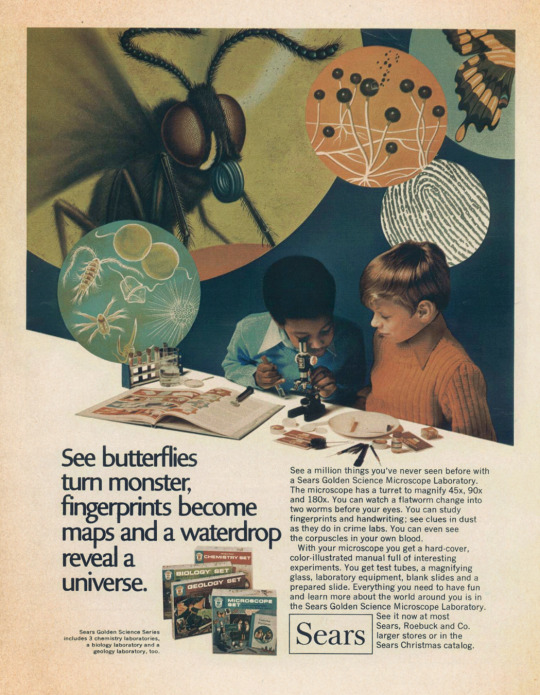
The Sears Golden Science Microscope Laboratory.
#vintage advertising#sears#microscopes#STEM#science#sears golden science microscope laboratory#sears christmas catalog#sears catalog
28 notes
·
View notes
Text
many many many kon and cassie thoughts at all times that i find extremely difficult to articulate. but do u guys think it was on purpose that one of cassies costumes was nearly identical to a super iconic buffy the vampire slayer outfit meanwhile kon was notably obsessed w the in-universe equivalent of that show. do u ever think about how the titular character is called wendy and kon calls cassie wondy. because personally i think the levels of mutual performance going on in their relationship could kill a man
#talk tag#young justice#i need to study koncassie in a laboratory i need to pipette them delicately onto a microscope slide#the persona. the brand. the gender . u get it
13 notes
·
View notes
Text
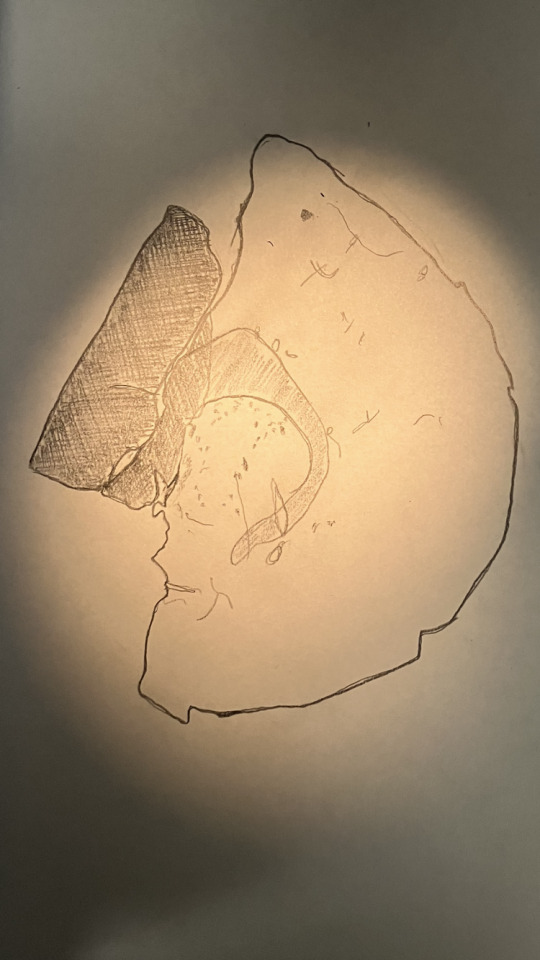
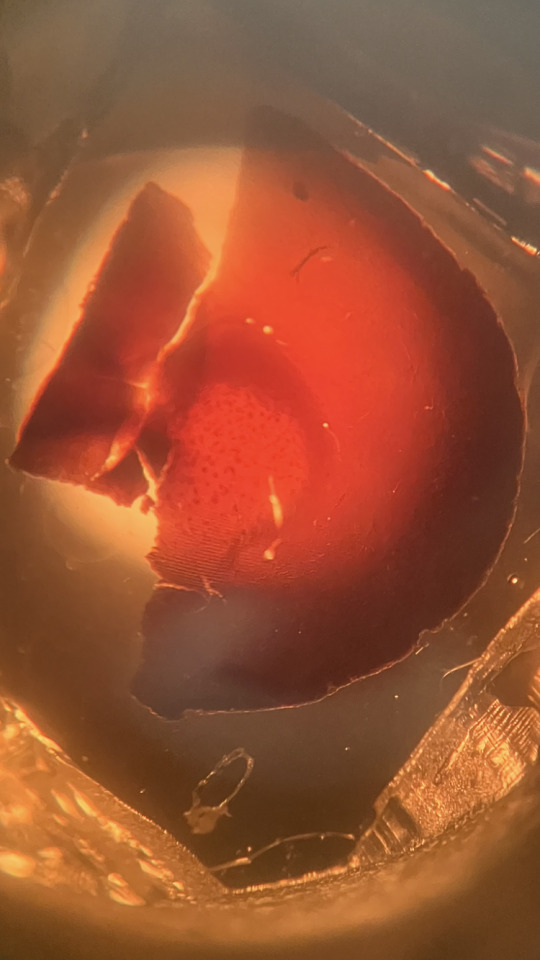
More brainy sketches
#brain anatomy#anatomical drawing#human anatomy#anatomy#neural science#science#microscope#biology#scientific illustration#brain#stuydblr#study aesthetic#stem student#studyinspo#stem studyblr#study blog#chaotic studyblr#studyblr#studyspo#study motivation#laboratory
8 notes
·
View notes
Text
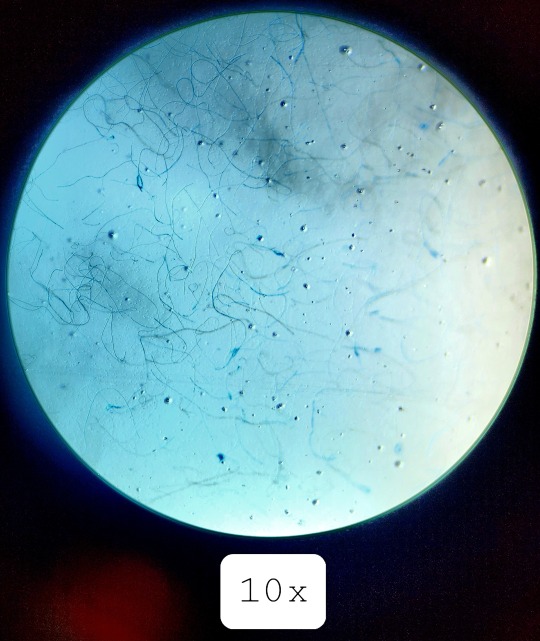

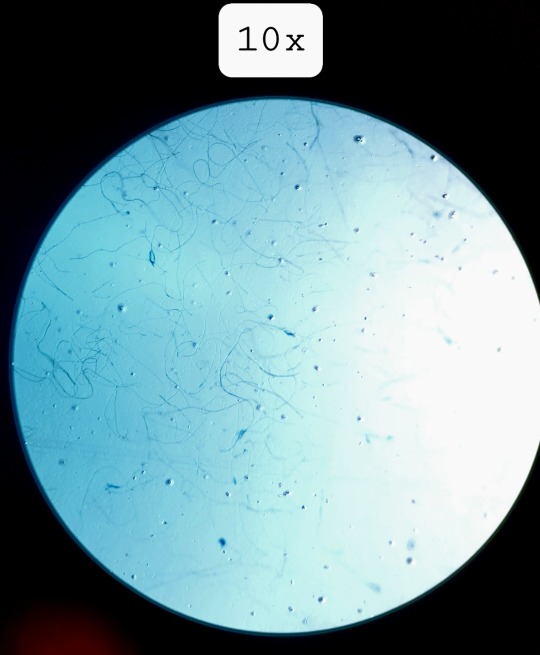
Fungal filaments under 10x
#studyblr#microbiology#microbio#microbio lab#microbiology lab#microbio laboratory#microbiology laboratory#fungi#fungal microbiology#fungi microbiology#microscopy#microscope#bio#biology
29 notes
·
View notes
Text
youtube
The confocal microscope at Imperial College's Sir Alexander Fleming Building lab is used for imaging the interior of living plant and animal cells.
During my PhD project, I used the confocal microscope to view the interior of Nicotiana benthamiana plant cells which were expressing Green Fluorescent Protein (GFP) tagged genes of interest. I aimed to find out where the proteins encoded by the genes of interest were localised in the plant cell, which turned out to be in the cytoplasm.
From Wikipedia's entry on Confocal Microscopy: "Confocal microscopy, most frequently confocal laser scanning microscopy (CLSM) or laser scanning confocal microscopy (LSCM), is an optical imaging technique for increasing optical resolution and contrast of a micrograph by means of using a spatial pinhole to block out-of-focus light in image formation. Capturing multiple two-dimensional images at different depths in a sample enables the reconstruction of three-dimensional structures (a process known as optical sectioning) within an object. This technique is used extensively in the scientific and industrial communities and typical applications are in life sciences, semiconductor inspection and materials science. Light travels through the sample under a conventional microscope as far into the specimen as it can penetrate, while a confocal microscope only focuses a smaller beam of light at one narrow depth level at a time. The CLSM achieves a controlled and highly limited depth of field."
Music by the Fiechter Brothers
Images by Katia Hougaard & the Facility for Imaging by Light Microscopy at Imperial College London
#katia plant scientist#botany#plant biology#plants#plant science#biology#science#science and technology#confocal microscopy#microscopy#microscope#scientific instruments#laboratory#research#phdblr#phd#phd life#molecular biology#cell biology#green fluorescent protein#plant scientist#Youtube
4 notes
·
View notes